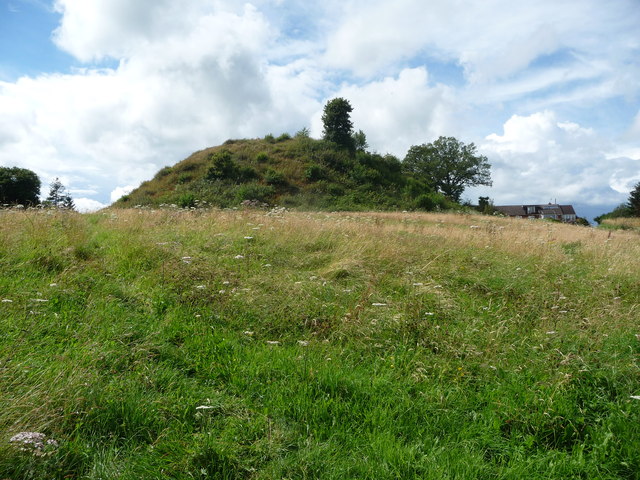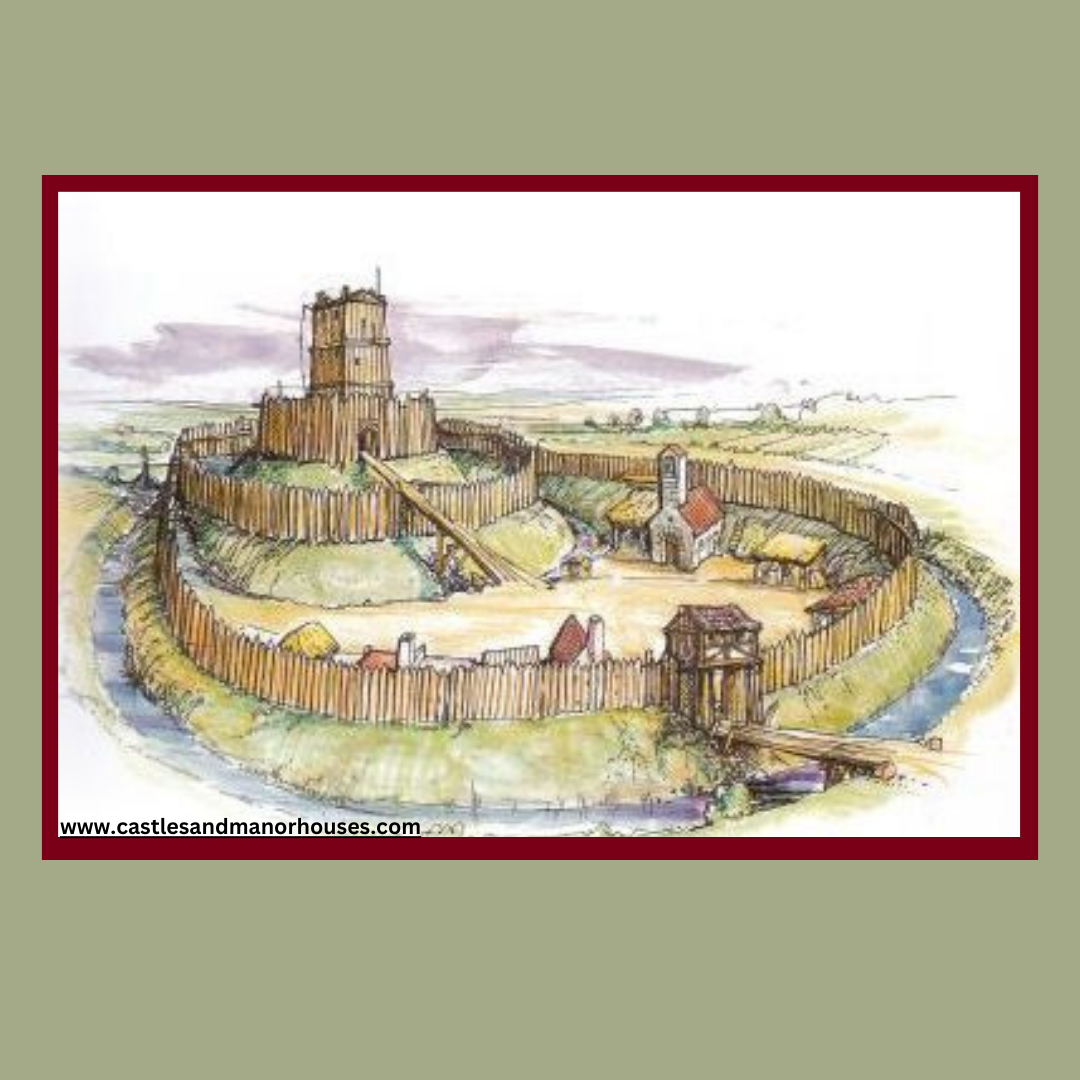From 1048 to 1052, King Edward of England allowed his Norman associates to build three castles along the Welsh border: Richard’s Castle, Hereford Castle, and Ewyas Harold. They built timber towers on high ground, or an earthwork mound called a motte. A large inner area called a bailey sat below the motte and tower. The bailey had outbuildings such as kitchens, a hall or chapel, armory, stables, etc. Timber walls surrounded the entire compound, and a defense ditch or moat ran around the hill or earthworks.
In 1066, the Normans anticipated an English attack as soon as they landed. They transported pre-built timber castles with the invasion fleet. Days before the Battle of Hastings, they erected the pre-built structures in Pevensey and Hastings. Normans built about 80 motte and bailey castles all over England between 1066 and 1087. Some of these were rebuilt later in stone.

You can read how I found the castle at Ewyas Harold. In my books, I eliminated the appendage to forestall confusion over the numerous Harolds of the time. The name, Harold, may honor the son of Ralph the Timid, earl of Herefordshire, great-grandson of Æthelred the Unready, and step-son of Count Eustace de Boulogne II, one of the historical actors appearing in my books.
